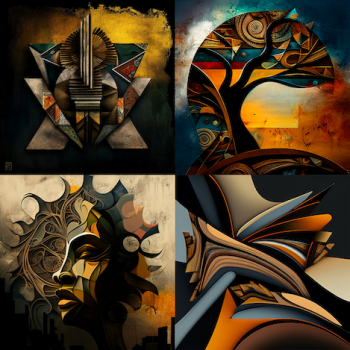Exploring the complex relationship between individual perspectives and the art-making process

Introduction
Art, as a form of human expression, is inherently subjective.
From its creation to its enjoyment, the value and meaning of art are largely determined by the individual perspectives of both the artist and the audience.
Here, we analyze the subjective nature of art creation and enjoyment, examining the role of personal experiences, emotions, and cultural backgrounds in shaping our understanding and appreciation of art.
The Subjective Nature of Art Creation
- Personal Experiences and Emotions
The act of creating art is deeply personal, often stemming from the artist’s own experiences, emotions, and beliefs.
An artist’s unique perspective on the world informs their choice of subject matter, materials, and techniques, resulting in a diverse range of artistic expressions.
This subjectivity allows artists to communicate complex emotions, ideas, and stories through their work, forging connections with their audience on a deeply emotional level.
- Cultural Influences
Artists are also influenced by their cultural backgrounds and the social and historical contexts in which they live.
These influences can be seen in the themes, symbols, and styles of their work, reflecting their unique perspective on the world.
By embracing the subjectivity of art creation, artists can challenge societal norms, explore personal identities, and promote cross-cultural understanding and dialogue.

The Subjective Nature of Art Enjoyment
- Personal Taste and Interpretation
The enjoyment of art is subjective, shaped by an individual’s personal tastes, interests, and experiences. What one person finds beautiful or captivating, another may find dull or uninteresting.
This subjectivity allows for a multitude of interpretations, providing a rich and diverse array of perspectives on a single work of art.
- Emotional Resonance
The emotional impact of art is also highly subjective, with different works resonating with different people in unique ways.
Our emotional response to art can be influenced by our own experiences and emotions, as well as our ability to empathize with the artist’s intentions and the emotions conveyed in the work.
This emotional connection is often what makes art so powerful and memorable, as it speaks to our innermost thoughts and feelings.
The Importance of Embracing Subjectivity
Recognizing and embracing the subjectivity of art creation and enjoyment is crucial for fostering a diverse and vibrant artistic landscape.
By acknowledging the unique perspectives and experiences of both artists and audiences, we can cultivate an environment in which art can continue to challenge, inspire, and connect us on a deeply personal level.
Conclusion
The subjectivity of art creation and enjoyment is a testament to the incredible diversity and complexity of human experience.
By embracing the personal nature of art, we can foster a deeper understanding and appreciation of the myriad ways in which individuals express themselves and connect with the world around them.
As we continue to engage with art in all its forms, let us remember to celebrate the subjective nature of art, honoring the unique perspectives and experiences that shape our understanding and enjoyment of this universal language.













